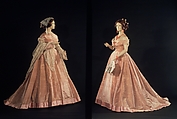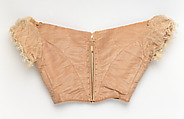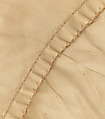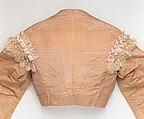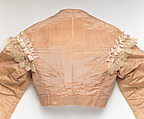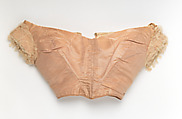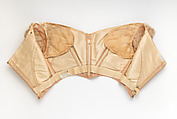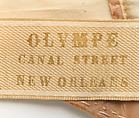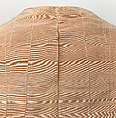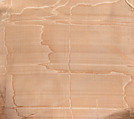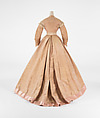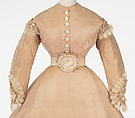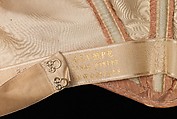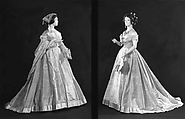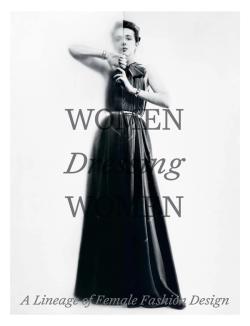Evening dress
Design House OLYMPE American
Designer Olympe Boisse American
Not on view
This is one of two extant dresses bearing a Mme. Olympe label. Olympe Boisse was a French-born New Orleans dressmaker who regularly traveled to Paris to keep abreast of trend-setting French fashions of the time.such as those by Charles Frederick Worth and Emile Pingat. Mme. Olympe, as she was professionally known, initially was an importer of French goods but in time designed and sold her own garments. Her claim to fame is that, considering the date of this dress, she was one of the first, if not the first, American dressmakers to label her gowns, a practice intiated by Worth et Bobergh in the early 1860s.
The Worth influence in this dress is readily seen in comparison to the Worth et Bobergh gown 2009.300.1372a–d in its silhouette and cut. The simple styling makes the beauty and femininity of the textile truly shine.
The female silhouette of the middle of the 19th century consisted of a fitted corseted bodice and wide full skirts. The conical skirts developed between the 1830s, when the high waist of the Empire silhouette was lowered and the skirts became more bell shaped, to the late 1860s, when the fullness of the skirts was pulled to the back and the bustle developed. The flared skirts of the period gradually increased in size throughout and were supported by a number of methods. Originally support came from multiple layers of petticoats which, due to weight and discomfort, were supplanted by underskirts comprised of graduated hoops made from materials such as baleen, cane and metal. The fashions during this time allowed the textiles to stand out because of the vast surface areas of the skirt and a relatively minimal amount of excess trim.
Due to rights restrictions, this image cannot be enlarged, viewed at full screen, or downloaded.
This artwork is meant to be viewed from right to left. Scroll left to view more.



